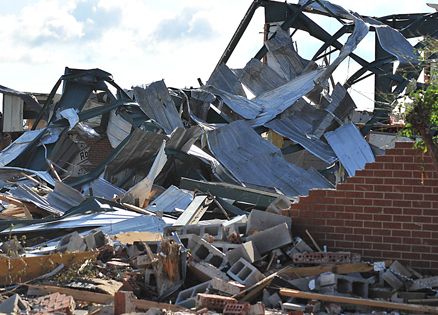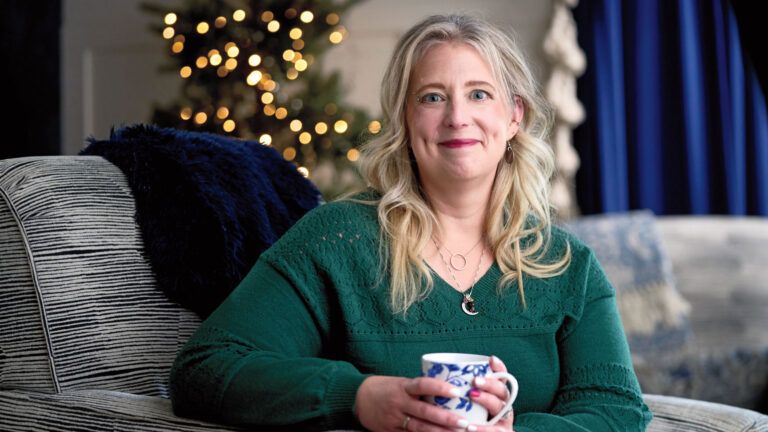Tornado warnings in Alabama in late spring are like mosquitoes in summer: pesky, but you get used to them. Most of my life, they’ve been a minor inconvenience. My daughters and I have our drill down to a simple routine: Go to the downstairs bathroom, grab a lantern in case of power failure then sit and wait for the all-clear before resuming normal activities. But after April 27th in Tuscaloosa, there would be no “normal” for some time to come.
The storm was forecast to be a big one, so we went to my parents’ house. I played cards and read with my daughters, trying to make a novelty of hiding out in my folks’ basement so the girls wouldn’t be scared. But as we listened to the wind whip outside and the radio reports of massive destruction in town, it was hard not to worry. The weather man said a wedge tornado nearly a mile wide had touched down in the heart of the city—right where Central Church of Christ is located, my spiritual home for the past 15 years.
Once the storm had passed, communication proved difficult. Power and phone were out for many residents, even those of us whose neighborhoods hadn’t been hit, and cell service was sketchy. Eventually, I got a text. A few church members had made their way through the rubble and confirmed that our building lay in ruins.
The tornado had stayed on the ground for nearly eight miles, and central Tuscaloosa looked like a war zone. The second floor of our church building was blown off, along with the gymnasium where my girls used to play after services. The façade leaned inward, bricks lying all around it. Inside what remained of the structure were beams, broken glass and tangled electrical cords. A total loss.
When the roads became passable, church members trickled in. Most of us initially teared up, shocked by our loss, but soon we were hugging our brothers and sisters finding reasons to thank God. Six students from our college ministry had taken shelter behind the pulpit that day, and though the building was ripped apart around them, they all walked out without a scratch.
Our elders and deacons realized that, in the midst of this sadness, God had given us a wonderful opportunity: Being in the heart of the destruction, we were perfectly situated to become a place of help and comfort. Sister congregations from other cities and states called and said: “We’re on our way.”
Tents were quickly set up around the building’s ruins. Another Church of Christ congregation had driven two large RVs and helped establish a home base. Church members were making meals, loading and unloading cases of clean water, sorting clothing, helping people who’d lost everything in the storm. Even the children were filling small bags with toothpaste, toothbrushes, soap and whatever else was available. Donations came in from businesses and individuals. We fed thousands of hungry people each day, just like Jesus had taught us.
For a while, I was assigned to traffic control, directing cars to the back to pick up and to the front to unload. What amazed me was that for every couple of cars that pulled in to collect what they needed, another car would arrive with people donating clothes or cases of bottled water. Many people who weren’t church members came to help with the work. “Just tell us what we can do,” they’d say.
That Sunday, we gathered to worship at another Church of Christ. Although it felt strange to be in a different place, it was still our church. After all, a church isn’t a building, but the people who come together in faith and love. And our congregation has plenty of both, whatever storms may come.
Download your FREE ebook, The Power of Hope: 7 Inspirational Stories of People Rediscovering Faith, Hope and Love





